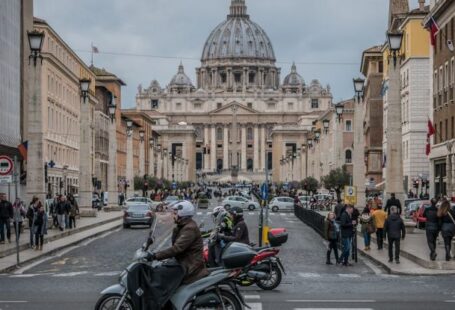St. Peter’s Basilica in Vatican City stands as a magnificent testament to the intertwining of faith and art. The grandeur and beauty of this iconic church have captivated visitors for centuries, drawing them in with its awe-inspiring architecture and masterful artistic creations. From the intricate details of its facade to the stunning interior adorned with priceless works of art, St. Peter’s Basilica is a true masterpiece that showcases the power of human creativity in service of religious devotion.
A Testament to Divine Inspiration
St. Peter’s Basilica is not merely a building; it is a symbol of faith and devotion that transcends time and space. The very foundation of the basilica is rooted in the belief that this sacred site is the final resting place of St. Peter, one of Jesus Christ’s apostles and the first pope of the Catholic Church. This belief has guided the construction of the basilica, leading to a structure that exudes a sense of divine inspiration and spiritual significance.
The architects and artists who worked on St. Peter’s Basilica were driven by a deep sense of faith, imbuing their creations with a profound reverence for the divine. Every aspect of the basilica, from its soaring dome to the intricate mosaics that adorn its walls, reflects a deep commitment to honoring the sacredness of the site and the teachings of the Catholic Church. The result is a space that not only inspires awe and wonder but also invites visitors to contemplate the mysteries of faith and the beauty of divine creation.
A Marvel of Architectural Ingenuity
One of the most striking features of St. Peter’s Basilica is its architectural design, which blends elements of Renaissance and Baroque styles to create a harmonious and visually stunning whole. The basilica’s facade, designed by renowned architects Carlo Maderno and Gian Lorenzo Bernini, is a testament to the skill and creativity of the artists who worked on this monumental project. The facade’s intricate details, including columns, statues, and reliefs, showcase the technical mastery of the craftsmen who brought this vision to life.
The crowning glory of St. Peter’s Basilica is its magnificent dome, designed by Michelangelo and later completed by Giacomo della Porta. The dome’s grandeur and beauty are a testament to the architectural ingenuity of its creators, who used innovative engineering techniques to achieve the seemingly impossible feat of building such a massive structure. The dome’s interior, decorated with stunning frescoes by artists like Giovanni Battista Gaulli and Domenichino, further enhances its beauty and grandeur, creating a space that is truly awe-inspiring.
An Artistic Treasure Trove
In addition to its architectural marvels, St. Peter’s Basilica is also home to a vast collection of artistic masterpieces that have been carefully curated over the centuries. The basilica’s interior is adorned with priceless works of art by some of the greatest artists in history, including Michelangelo, Bernini, Rafael, and Caravaggio. These artworks, which range from sculptures and paintings to mosaics and frescoes, reflect the beauty and richness of the Catholic artistic tradition.
One of the most famous works of art in St. Peter’s Basilica is Michelangelo’s Pietà, a breathtaking sculpture that depicts the Virgin Mary cradling the body of Jesus after his crucifixion. The Pietà is a masterpiece of Renaissance art, showcasing Michelangelo’s skill in capturing human emotion and beauty in stone. Another iconic work housed in the basilica is Bernini’s baldacchino, a massive bronze canopy that covers the high altar and serves as a focal point of the church’s interior.
A Place of Pilgrimage and Inspiration
St. Peter’s Basilica is not just a church; it is a place of pilgrimage and inspiration for millions of faithful around the world. Every year, countless visitors flock to the basilica to marvel at its beauty, offer prayers at its sacred altars, and experience a sense of spiritual renewal in its hallowed halls. The basilica’s significance as a symbol of the Catholic Church and a beacon of faith cannot be overstated, as it continues to draw people from all walks of life to witness its grandeur and reflect on the mysteries of faith and art.
In conclusion, St. Peter’s Basilica stands as a testament to the enduring power of faith and art to inspire and uplift the human spirit. From its awe-inspiring architecture to its priceless artistic treasures, the basilica is a living testament to the beauty and majesty of the Catholic tradition. Visiting St. Peter’s Basilica is not just a journey through history; it is a spiritual experience that allows visitors to connect with something greater than themselves and witness the transformative power of faith and creativity.





